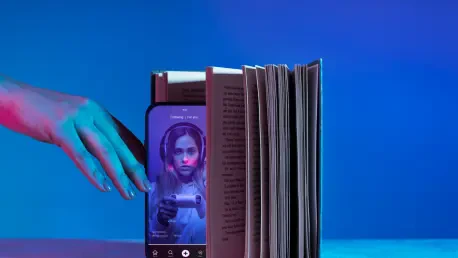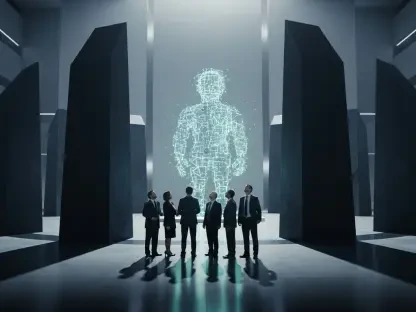In a world where social media reigns supreme, a new breed of celebrity has emerged from the digital ether, captivating millions without ever stepping foot in the physical realm. Picture a flawless model like Aitana López, boasting 4.3 million Instagram followers and securing lucrative deals with brands like Adidas, all while existing solely as lines of code. These AI-generated influencers are not just novelties; they are reshaping the very fabric of online celebrity culture, challenging traditional notions of stardom and authenticity. What drives this fascination with virtual personas, and how are they altering the landscape of influence on platforms like TikTok and Instagram? This exploration dives deep into a phenomenon that is as mesmerizing as it is controversial.
The Magnetic Pull of Digital Stars
The allure of AI influencers lies in their ability to transcend human limitations, offering a curated perfection that real-life celebrities often struggle to maintain. Virtual personas like Lu of Magalu, with a staggering 7.8 million followers, have become cultural icons in places like Brazil, partnering with global giants such as McDonald’s to promote products with unmatched consistency. Unlike human influencers, these digital entities never tire, age, or falter, presenting an idealized version of fame that resonates deeply with audiences seeking escapism in a chaotic world.
This phenomenon taps into a broader societal shift toward digital immersion, where platforms prioritize aesthetics over substance. The rise of these virtual stars reflects a growing comfort with technology as a creator of personalities, not just tools. Their ability to amass followings rivaling human celebrities signals a redefinition of connection, where fans engage with an idea rather than a person, raising intriguing questions about the nature of influence in the modern era.
Why Virtual Celebrities Are a Game-Changer
The significance of AI influencers extends beyond mere fascination; they represent a seismic shift in how fame is constructed and monetized. In an age where social media dictates trends, these digital creations offer brands a controlled, scalable alternative to human ambassadors. Aitana López, for instance, earns up to $11,500 monthly, showcasing how companies can craft a spokesperson immune to scandals or unpredictability, a stark contrast to the risks associated with traditional influencers.
Moreover, their emergence aligns with evolving consumer behavior, where authenticity often takes a backseat to entertainment value. Brands are increasingly drawn to the flexibility of virtual personas, who can be tailored to specific demographics or campaigns without logistical constraints. This trend underscores a broader transformation in marketing strategies, positioning AI influencers as not just participants but pioneers in the digital economy.
Unpacking the AI Influence Revolution
The impact of AI influencers on online celebrity culture can be broken down into several transformative dimensions. One key aspect is their embodiment of effortless perfection, as seen with Mia Zelu, who has garnered 169,000 followers with images of unattainable beauty. Yet, the subtle disclosure of her AI nature in bio tags sparks debates about deception, as fans marvel at her realism while questioning the ethics of such idealized portrayals.
Another dimension is their commercial dominance, with figures like Lu of Magalu commanding $34,320 per sponsored post, outpacing many human counterparts. Then there’s the diversity in design, ranging from hyper-realistic models like Shudu, dubbed the world’s first digital supermodel, to whimsical characters like Nobody Sausage, whose 22.1 million TikTok followers revel in absurdity. Audience reactions also vary, with hyper-realistic designs sometimes triggering unease due to the “uncanny valley” effect, while more cartoonish personas often enjoy broader acceptance, highlighting the complex interplay between design and trust.
Expert Perspectives and Public Pulse
Insights from industry experts and public sentiment shed light on the nuanced reception of AI influencers. A recent Australian study published in the Proceedings of the ACM Designing Interactive Systems Conference revealed that overly human-like virtual personas often evoke discomfort, diminishing audience trust. This finding points to a delicate balance creators must strike to maintain engagement without alienating followers.
Public reactions further illustrate this tension, as seen in comments on Mia Zelu’s Instagram posts, where admiration for her stunning visuals often clashes with skepticism about her reality. Brand managers and tech analysts alike note that while AI influencers offer unparalleled control for marketing, their success hinges on transparency and design choices that resonate emotionally. These perspectives emphasize the need for a deeper understanding of how virtual fame intersects with human perception in digital spaces.
Charting a Path Forward with AI Fame
Navigating the world of AI influencers requires a thoughtful approach to ensure ethical engagement and informed interaction. For individuals, identifying virtual content can start with checking for subtle indicators like bio tags or visual inconsistencies, such as unnatural lighting in images. This vigilance helps distinguish between human and AI personas, fostering a more critical consumption of online content.
For those in marketing or content creation, collaborating with AI influencers offers cost-effective opportunities but demands alignment with audience values. Choosing designs—whether lifelike or abstract—should reflect target demographics, drawing from engagement data to maximize impact. Above all, advocating for clear labeling of AI-generated content remains crucial to build trust, ensuring that the digital landscape evolves with integrity as these virtual stars continue to rise.
As the journey through the realm of AI influencers unfolded, it became evident that their influence had already left an indelible mark on online culture. Their ability to captivate millions with flawless facades and strategic designs had redefined what it meant to be a celebrity in the digital age. Looking ahead, the challenge lay in balancing their commercial allure with ethical transparency, urging creators and brands to prioritize authenticity in disclosures. The next steps involved fostering public awareness about distinguishing virtual personas and encouraging industry standards for labeling AI content. By embracing these measures, society could harness the potential of digital fame while safeguarding trust, ensuring that the legacy of AI influencers remained one of innovation rather than illusion.









